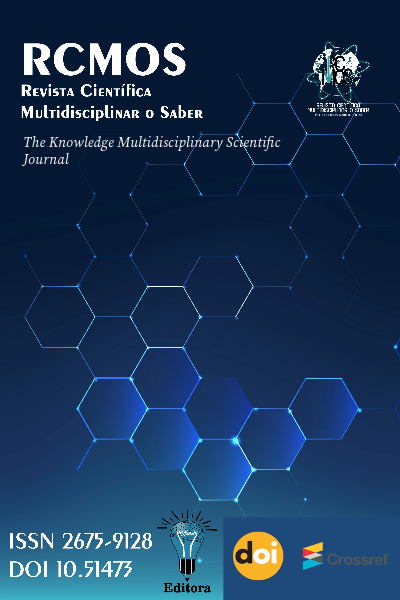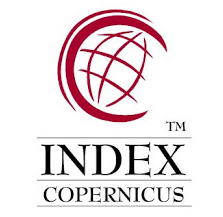Sistemas de Informação Geográfica (SIG) no Planejamento Logístico da Distribuição Alimentar em Regiões Vulneráveis
Geographic Information Systems (GIS) in the Logistic Planning of Food Distribution inVulnerable Regions
DOI:
https://doi.org/10.51473/rcmos.v1i8.2021.1107Palavras-chave:
Sistemas de Informação Geográfica; Segurança Alimentar; Logística Humanitária; Regiões Vulneráveis; Distribuição de Alimentos.Resumo
O presente artigo científico tem como objetivo avaliar como os Sistemas de Informação
Geográfica (SIG) podem ser utilizados no planejamento logístico da distribuição alimentar em
regiões vulneráveis, com foco especial em áreas marcadas por insegurança alimentar crônica.
Através de uma abordagem metodológica baseada em revisão bibliográfica e análise de estudos
de caso nacionais e internacionais, este trabalho destaca o papel estratégico dos SIG na
otimização da logística, no mapeamento preciso das necessidades populacionais e na melhoria
da cobertura da assistência alimentar. Com base em pesquisas promovidas por organizações
como FAO, WFP e acadêmicos renomados na área da geotecnologia e segurança alimentar,
defende-se que os SIG são ferramentas essenciais para políticas públicas mais equitativas e
eficazes. O uso de dados geoespaciais permite intervenções orientadas por evidências,
possibilitando uma alocação mais eficiente de recursos e maior alcance em populações
marginalizadas. A articulação entre tecnologia, planejamento e justiça social é o cerne deste
trabalho, que propõe soluções práticas para um dos maiores desafios da contemporaneidade: a
fome.
Downloads
Referências
ARVIS, J.-F. et al. Connecting to Compete 2018: Trade Logistics in the Global Economy.
Washington, DC: World Bank, 2018.
BALLOU, R. H. Gerenciamento da cadeia de suprimentos: planejamento, organização e
logística empresarial. 5. ed. Porto Alegre: Bookman, 2006.
BURROUGH, P. A.; MCDONNELL, R. A. Principles of Geographical Information Systems.
nd ed. Oxford: Oxford University Press, 1998.
CLARKE, K. C. Getting Started with Geographic Information Systems. 4th ed. New Jersey:
Prentice Hall, 2003.
COMPANHIA NACIONAL DE ABASTECIMENTO – CONAB. Boletim da Agricultura
Familiar e Segurança Alimentar. Brasília: CONAB, 2020. Disponível em:
FAO – Food and Agriculture Organization. The State of Food Security and Nutrition in the
World 2020. Rome: FAO, 2020. Disponível em: https://www.fao.org.
HEYWOOD, I.; CORNELIUS, S.; CARVER, S. An Introduction to Geographical Information
Systems. 4th ed. Essex: Pearson Education, 2011.
INSTITUTO BRASILEIRO DE GEOGRAFIA E ESTATÍSTICA – IBGE. Pnad Contínua:
Segurança Alimentar 2017–2018. Rio de Janeiro: IBGE, 2020.
KOVÁCS, G.; SPENS, K. M. Humanitarian logistics and supply chain management: the start
of a new journal. Journal of Humanitarian Logistics and Supply Chain Management, v. 1, n.
, p. 5–14, 2009. DOI: https://doi.org/10.3917/books.005.0014
LONGLEY, P. A. et al. Geographic Information Systems and Science. 3rd ed. Chichester: John
Wiley & Sons, 2015.
ORTEGA, R. A.; SÁNCHEZ, M. C.; LÓPEZ, J. M. SIG como apoio à logística rural: estudo
de caso no sul da Colômbia. Revista Latinoamericana de Geoinformática, v. 15, n. 2, p. 55–
, 2017.
TOMLINSON, R. Thinking about GIS: Geographic Information System Planning for
Managers. 3rd ed. Redlands, CA: ESRI Press, 2003.
VAN WASSENHOVE, L. N. Blackett Memorial Lecture: Humanitarian aid logistics: supply
chain management in high gear. Journal of the Operational Research Society, v. 57, n. 5, p.
–489, 2006.
GUPTA, R.; SHARMA, S. Segurança em plataformas cloud: desafios e soluções. Revista de
Segurança da Informação, v. 9, n. 2, p. 35–50, 2020.
KAGERMANN, H.; WAHLSTER, W.; HELBIG, J. Recommendations for implementing the
strategic initiative INDUSTRIE 4.0. Final report of the Industrie 4.0 Working Group, acatech
– National Academy of Science and Engineering, 2013.
KUMAR, V.; RAO, K. Collaborative supply chain management enabled by cloud computing.
International Journal of Logistics Management, v. 28, n. 1, p. 88–107, 2017.
KUMAR, P. et al. AI and machine learning in supply chain management: trends and future
directions. Journal of Industrial Engineering, v. 45, n. 4, p. 210–225, 2020.
LEE, H.; PARK, J. Risk management in supply chains using predictive analytics. Journal of
Supply Chain Management, v. 56, n. 3, p. 50–64, 2020.
LEE, S.; KIM, J.; CHOI, H. Customer-centric supply chain strategies enabled by digital
technologies. International Journal of Production Economics, v. 211, p. 1–12, 2019.
LI, J.; WANG, T. Mobile applications in cloud-based supply chain management: a case study.
Journal of Business Logistics, v. 39, n. 2, p. 85–101, 2018. DOI: https://doi.org/10.1111/jbl.12180
LUND, S. et al. Industry 4.0 and the digital transformation of supply chains. McKinsey Digital,
MARSTON, S. et al. Cloud computing – The business perspective. Decision Support Systems,
v. 51, n. 1, p. 176–189, 2011.
MARTINS, F.; OLIVEIRA, P. Logística sustentável e otimização de transporte: um estudo
com Oracle SCM Cloud. Revista Brasileira de Logística, v. 10, n. 2, p. 45–60, 2021.
MCKINSEY & COMPANY. Digital supply chains: enhancing resilience through technology.
McKinsey Report, 2018.
MELNYK, S. A. et al. Supply chain automation and process improvements. International
Journal of Operations & Production Management, v. 39, n. 6, p. 695–718, 2019.
MOLINA, J. F. et al. Interoperabilidade de sistemas na cadeia de suprimentos. Revista
Eletrônica de Sistemas de Informação, v. 15, n. 3, p. 120–134, 2019.
MORRIS, C. et al. Digital ecosystems in supply chain management: future directions. Journal
of Supply Chain Innovation, v. 7, n. 1, p. 5–18, 2020.
MURPHY, D.; KNOTT, D. Artificial intelligence in cloud SCM: a review. Journal of Supply
Chain Technology, v. 8, n. 2, p. 95–110, 2020. DOI: https://doi.org/10.1007/s42488-020-00025-z
OLIVEIRA, T.; PEREIRA, R. Avaliação do custo-benefício em projetos de transformação
digital. Revista de Administração Contemporânea, v. 23, n. 4, p. 512–530, 2019.
ORACLE. Oracle SCM Cloud overview. Oracle Corporation, 2021. Disponível em:
https://www.oracle.com/scm-cloud/. Acesso em: 15 jun. 2025.
PEREIRA, A. C.; SILVA, F. R.; ALMEIDA, J. F. Uso de Oracle SCM Cloud na indústria
farmacêutica: um estudo exploratório. Revista Farmacêutica, v. 25, n. 3, p. 77–89, 2020.
RAMOS, L. et al. Segurança cibernética na nuvem: desafios atuais. Revista Brasileira de
Segurança da Informação, v. 12, n. 1, p. 28–42, 2021.
SANTOS, M. et al. Adoção de soluções em nuvem na cadeia logística brasileira. Revista
Logística Brasil, v. 8, n. 2, p. 102–118, 2020.
SANTOS, R. F. et al. Sustentabilidade digital na cadeia de suprimentos. Revista de Gestão
Ambiental, v. 13, n. 4, p. 75–88, 2021. DOI: https://doi.org/10.33282/abaa.v13i51.739
SMITH, J.; JOHNSON, R. Blockchain applications in supply chain: a review. International
Journal of Logistics Research, v. 15, n. 2, p. 50–68, 2021.
SOUSA, P.; ALMEIDA, R. F. Gestão da mudança na implantação de SCM digital. Revista de
Administração e Tecnologia, v. 14, n. 1, p. 99–115, 2020. DOI: https://doi.org/10.32031/ITIBTE_ITJ_14-DM6
TAN, K. et al. Cost reduction through cloud supply chain management. Journal of Business
Logistics, v. 40, n. 1, p. 30–47, 2019. DOI: https://doi.org/10.1111/jbl.12203
TUCKER, M. Digital transformation in supply chains: a systematic review. International
Journal of Production Research, v. 57, n. 10, p. 3123–3143, 2019.
WANG, S.; ZHANG, Y. Real-time visibility in cloud supply chains. Journal of Operations
Management, v. 58, p. 47–61, 2020. DOI: https://doi.org/10.36486/mst2411-3816.2020.2(61).5
ZHANG, L.; LIU, X. IoT-enabled supply chain transparency. Journal of Supply Chain
Management, v. 55, n. 3, p. 20–35, 2019. DOI: https://doi.org/10.17979/rgf.2019.20.0.5916
Downloads
Arquivos adicionais
Publicado
Edição
Seção
Licença
Copyright (c) 2021 José Flavio Coutinho de Souza (Autor)

Este trabalho está licenciado sob uma licença Creative Commons Attribution 4.0 International License.
Este trabalho está licenciado sob a Licença Creative Commons Atribuição 4.0 Internacional (CC BY 4.0). Isso significa que você tem a liberdade de:
- Compartilhar — copiar e redistribuir o material em qualquer meio ou formato.
- Adaptar — remixar, transformar e construir sobre o material para qualquer propósito, inclusive comercial.
O uso deste material está condicionado à atribuição apropriada ao(s) autor(es) original(is), fornecendo um link para a licença, e indicando se foram feitas alterações. A licença não exige permissão do autor ou da editora, desde que seguidas estas condições.
A logomarca da licença Creative Commons é exibida de maneira permanente no rodapé da revista.
Os direitos autorais do manuscrito podem ser retidos pelos autores sem restrições e solicitados a qualquer momento, mesmo após a publicação na revista.

















